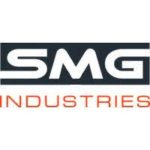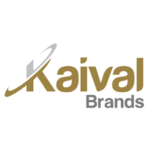Put Some Panache in Your Portfolio for Spirits Profits
 When it comes to adult beverage stocks, more commonly known as spirits makers, plenty of investors already know about Diageo (NYSE: DEO), the maker of Jose Cuervo tequila, Tanqueray gin and other ubiquitous brands. Beam (NYSE: BEAM), the maker of its namesake bourbon and some other recognizable brands, is another popular spirits stock. Panache Beverage should be on this short list too.
When it comes to adult beverage stocks, more commonly known as spirits makers, plenty of investors already know about Diageo (NYSE: DEO), the maker of Jose Cuervo tequila, Tanqueray gin and other ubiquitous brands. Beam (NYSE: BEAM), the maker of its namesake bourbon and some other recognizable brands, is another popular spirits stock. Panache Beverage should be on this short list too.
Since premium spirits are considered discretionary items, the time to be involved with these types of stocks is when the economy is recovering…when consumer confidence is recovering and rising.
That is when consumers don’t mind parting with a few extra dollars to get “the good stuff.” Indeed, the current economic environment is, at the very least, becoming conducive to folks paying a little extra for their favorite, premium spirits brands.
For investors, that could mean some decent returns from DEO, BEAM and others like them, but given the soaring popularity of high-end spirits in the U.S., the time may just be right to embrace a micro-cap name with massive potential.
Enter Panache Beverage (OTCQB: WDKA), a micro-cap beauty
New York-based Panache is nearly a decade old and got its start primarily as an importer of the premium vodka 42 Below. As Zacks points out in a recent article, that particular brand was well-known overseas, but not in the U.S. But in a testament to Panache’s marketing acumen and deal-making savvy, 42 Below was being sold in 16 states one year after making its U.S. debut.
A $71 million success story launches a unique business model
By late 2006, Bacardi purchased 42 BELOW for $91 million (representing a gain on sale of $71 million).
With the success of 42 Below, Panache made the transition from importer to brand developer. The easy way of describing the Company’s unique strategy is like this: Panache develops new spirits brands and nurtures those labels until they become attractive acquisitions all the while working to expand its portfolio.
Bottom line: It’s more cost effective for large spirits makers like Bacardi and Diageo to grow via acquisition rather than spend all the time it takes to develop a new, competing brand. Yes, they spend a bundle for an established brand, (that’s how Panache and their shareholders could make a bunch of money) but these global spirits companies cut two to three years off the grassroots timeline.
A predictable question about Panache’s business model is “Does the company currently have a portfolio of attractive acquisition targets?”
The answer is a resounding yes
Take Alibi American Whiskey. Panache rolled out Alibi in New York, Florida and New Jersey in November 2012. Just look at the impact Alibi has already had.
“Revenue for the fourth quarter exceeded $2 million driven by strong growth in vodka sales as well as over $600,000 in revenue generated from the recently launched Alibi American Whiskey,” said Panache in its fourth-quarter earnings statement.
In addition to its developing whiskey brand, Panache has a legitimate acquisition target in the form of Wodka Vodka. Of all spirits, vodka has been the leader in the recent U.S. adult beverage boom. The thing is the vodka arena is loaded with competition.
Think about it: You can probably name four or five vodka brands without much effort. Clearly, that means any worthy new competitors in the vodka business better have something special to offer.
Panache’s Wodka does. Produced in Poland, Wodka earned a rating of 90 from the Beverage Tasting Institute, which equates to “exceptional.” OK, so there are some other brands that have received that rating as well, but this where Wodka distinguishes itself: It only costs $10 for a $750 ml bottle.
Some of Wodka’s more well-known competitors cost two and three times that much. In fact, Wodka is the only vodka to ever receive the 90 rating from the Beverage Tasting Institute at such a low price point.
Wodka is now available in nearly every U.S. state and Panache says the brand is performing in key markets such as Florida, Texas and Washington D.C. Plus, they have penetrated five additional global territories. That could be the reason why the research firm of WSR Equity Research is forecasting Panache revenue of $10.2 million, $16.7 million and $25.1 million for fiscal years 2013, 2014 and 2015 respectively. From 2013 to 2015, case growth for Wodka is expected to rise by 66%.
Bullish on WDKA
Again, it is easy to see why analysts are bullish on Panache. Not only is the company well-capitalized with a recent $3.5 million financing, but it is brands are thriving with consumers.
In a 30-page research report published in late March, WSR Equity Research said its low-end 12-month price target for Panache is $0.80… its high-end price target is $3.07 and the Target Value Average price is $2.01.
From 2x to 5x potential
If it’s the low-end target that proves accurate… current investors will have close to a double.
But if WDKA hits that high-end from current levels, then we’re looking at a Five-Bagger Plus.
A 553% gain…NOW…that’s worth toasting to.
Mike Casson
Executive Editor
NOTICE: MicroCap MarketPlace (MCMP) is a financial publisher and not a broker/dealer or investment adviser. Readers, subscribers and web site visitors are responsible for individual investment decisions. All information contained in our newsletters or on our web site should be independently verified with the featured companies and readers should always conduct their own research and due diligence and engage professional advisors as they deem appropriate before making investment decisions. In the interest of full-disclosure, Casson Media Group, Inc. an affiliated company received seventy-five hundred dollars for market awareness coverage of the subject company. As you have read many times on these pages, micro-cap investing involves inherent risks and investors should carefully research any company considered for investment. Micro-cap companies are usually early in their market cycle and vulnerable to significant price volatility. Past results are not necessarily indicative of future performance.






